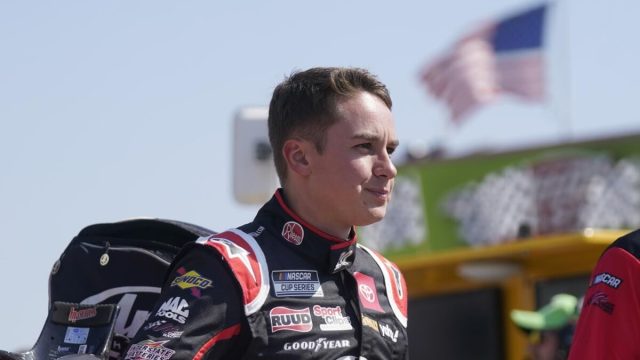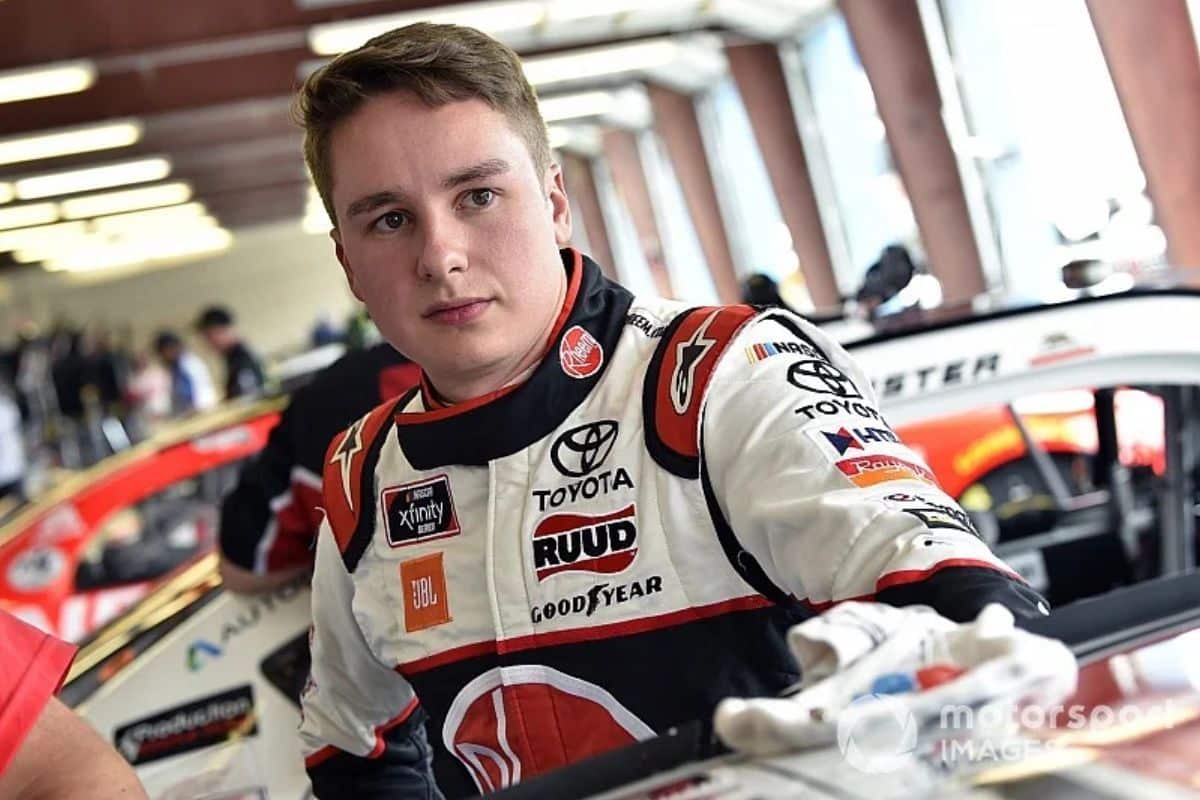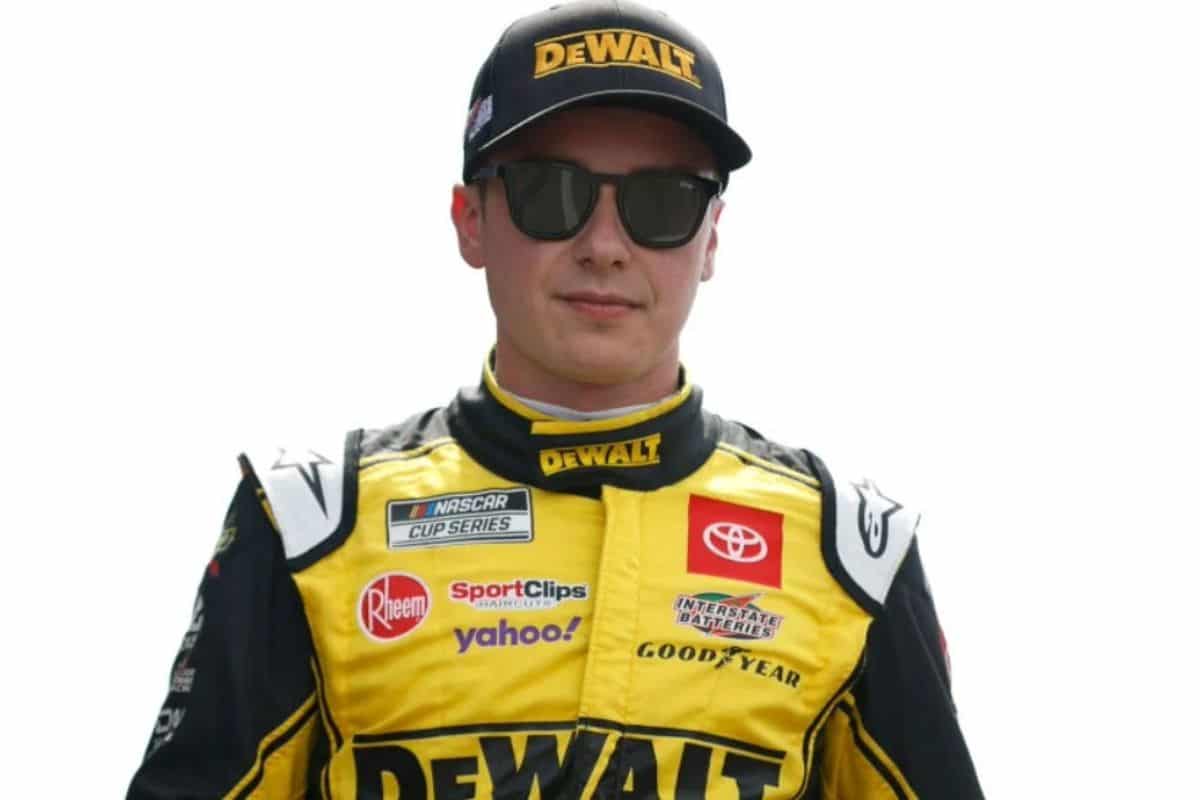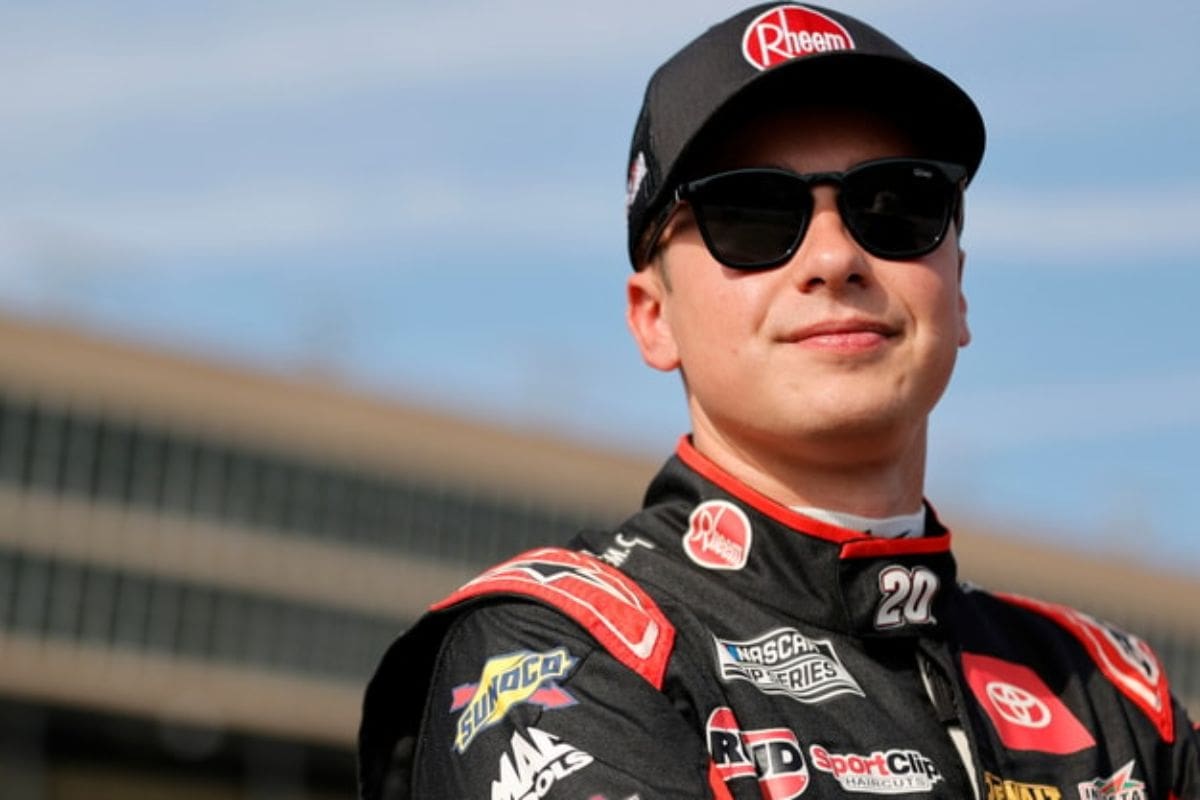Christopher Bell Crashes in Practice: Christopher Bell, an accomplished racer at Iowa Speedway with multiple Xfinity Series victories, encountered a severe crash during Friday’s practice due to a flat right front tire on his No. 20 toyota/”>Toyota. This incident necessitated a switch to a backup car, a move that highlights both challenges and opportunities for Bell. His impressive performance earlier in the session emphasizes his capability and familiarity with the track. The crash has prompted discussions about track surface integrity and tire conditions. Bell remains optimistic, leveraging his extensive track knowledge and past performance to adapt to the backup car. Learn more about the strategic adjustments and race dynamics.
Key Highlights
- Christopher Bell crashed in practice at Iowa Speedway due to a flat right front tire on his No. 20 Toyota.
- The crash caused significant damage, necessitating a switch to a backup car for the race.
- Bell had posted the fastest time midway through Friday’s practice session prior to the crash.
- Bell’s experience and past successes at Iowa Speedway include back-to-back victories in the Xfinity Series.
- The team is leveraging data from the primary car to optimize the backup car’s performance.
Background and Expectations
Heading into this weekend’s action at Iowa Speedway, Christopher Bell’s team was buoyed by his past successes and extensive experience at the track. Bell’s familiarity with the Iowa Speedway is well-documented, having secured back-to-back victories during his Xfinity Series tenure. This history of success naturally boosted the performance outlook for the weekend, painting an optimistic picture for both Bell and crew chief Adam Stevens.
The strategic approach of Bell’s team was methodically crafted, leveraging his deep-seated knowledge of the track. With Bell being one of just three drivers who participated in the Goodyear Tire Test at Iowa Speedway in May, the team had a wealth of data and insights to refine their strategy. This advantage was evident as Bell posted the fastest time on the board midway through Friday’s practice session, reflecting the team’s meticulous preparation and strategic execution.
The driver mindset heading into the race was one of confident resolve. Bell’s previous wins at the track and his extensive preparation were instrumental in fostering a positive mental framework. The team’s strategy was clear: capitalize on Bell’s track familiarity to deliver a dominant performance.
However, success at Iowa Speedway also required adaptive capabilities. Race day adjustments are an essential component of any winning strategy, and Bell’s team was prepared to make necessary tweaks based on real-time performance data. This readiness to adapt ensured that any unforeseen challenges could be met with swift and effective responses, increasing their chances for success.
The Incident
The incident occurred on Lap 19 when a flat right front tire on Christopher Bell’s No. 20 Toyota sent him into the outside wall at the exit of Turn 4. The tire failure led to a practice crash that has necessitated the use of a backup car for the upcoming race.
Bell’s car, which had shown promising performance during the initial laps of practice, suffered significant damage upon impact, making it unfit for further competition without extensive repairs.
As a result, Joe Gibbs Racing was compelled to unload the backup car, a move that introduces both opportunities and challenges for Bell. While the team is confident in the capabilities of the backup vehicle, the need to switch cars represents a race setback for Bell, who had been aiming for a strong showing in his Iowa debut.
The shift to the backup car will require Bell and his crew to quickly adapt to potential differences in handling and performance characteristics, which could impact their strategic approach for the race.
Despite this adversity, Bell remains optimistic about his chances. The backup car, carefully prepared and fine-tuned, offers a solid platform for competitive performance. The team will now focus on optimizing the setup and ensuring that Bell can extract maximum performance during the race.
Related Issues and Reactions
Christopher Bell’s crash has sparked discussions about the integrity of the track surface and potential safety concerns. The incident, occurring during practice, has raised questions about whether the recent repave contributed to the mishap.
Significantly, Ty Gibbs from Joe Gibbs Racing experienced a flat tire just 10 minutes prior to Bell’s crash, though Gibbs managed to avoid the wall. This sequence of events has highlighted the intricate interplay between tire pressure and track conditions
"The fact that we were fast when we unloaded makes me excited about the backup, but it's a backup for a reason."@CBellRacing will be relegated to a backup car after a flat tire drove his No. 20 Toyota hard into the wall.
📹: @m_massie22 pic.twitter.com/Rz4kPwJOmd
— Frontstretch (@Frontstretch) June 14, 2024
Safety concerns have been at the forefront of team discussions, as consistent tire failures could imply a deeper issue with the newly repaved surface. The track conditions, particularly the uneven sections, are being scrutinized to determine if they are exacerbating tire wear and causing these incidents. The teams are carefully evaluating tire pressure settings to adapt to the track.
Bell’s Comments and Preparations
In response to the crash, Bell expressed his disappointment but remained optimistic about the performance potential of the backup car. The Joe Gibbs Racing driver acknowledged the unexpected nature of the tire failure but emphasized his confidence drawn from prior experiences at Iowa Speedway.
Bell’s mindset appears determined and focused, despite the setback. His familiarity with the track, demonstrated by his impressive performance history, provides a foundation for a strong recovery. Reflecting on the tire test conducted in May, Bell noted the effectiveness of their long runs, which should aid in configuring the backup car.
- Bell’s mindset: Determined to overcome the challenge and perform well.
- Backup strategy: Confident in the setup derived from the primary car’s data.
- Track familiarity: Extensive experience with two wins and multiple top finishes.
- Tire test: Valuable data from May’s Goodyear Tire Test to inform adjustments.
- Performance history: Dominant record with 668 laps led at Iowa Speedway.
Bell openly shared his thoughts on the backup strategy, mentioning, ‘Just the fact that we were fast when we unloaded makes me excited about the backup, but it’s a backup for a reason.’ His pragmatic approach highlights an understanding of the inherent limitations but also an enthusiasm to extract the best possible performance.
“I’m perfectly fine, obviously a big disappointment and something I didn’t see coming at all. Whenever we were here for the tire test, we did 50-lap runs like they were going out of style. I don’t even know how many laps I did but it couldn’t have been more than 20.” – Bell
The driver’s extensive track familiarity and robust performance history at Iowa Speedway bolster his optimism. Despite the challenges posed by using a backup car, Bell’s tire test insights and strategic mindset are crucial in setting up the vehicle to tackle the partially repaved track.
Impact of the Repave
A significant factor affecting this weekend’s race will be the partial repaving of Iowa Speedway, which has altered the dynamics of the track’s racing lines. The repaving project, which was only partially completed, has created a unique set of challenges for drivers.
With the bottom and middle lanes now freshly paved and the topmost lane left untouched and essentially unusable, the track conditions have become a focal point for teams and drivers alike.
The effect on performance will be substantial, as the newly paved sections offer different grip levels compared to the older, worn parts of the track. This disparity is expected to play a critical role in tire management. Drivers will need to navigate these varying surfaces carefully to maintain their tires’ integrity and optimize speed throughout the race.
Given these conditions, race strategy will be of paramount importance. With the top lane out of play, overtaking opportunities will be limited, making track position more critical than ever.
Teams will need to devise strategies that allow their drivers to capitalize on the more favorable bottom and middle lanes while conserving their tires for the latter stages of the race.
For many, including Christopher Bell, the partially repaved track and the necessity of using a backup car will level the field, negating some of the advantage traditionally held by those familiar with the old high tire wear surface.
“I mean, it just completely ruined the corners, and it’s gonna make it a one-groove race track,” Bell said. “They’ve been telling us that for a year, ever since they announced that Iowa was gonna be on the Cup schedule. NASCAR was informing us that they were gonna do, they told us patch jobs. Then, repaving the bottom half of the corners is gonna make it where the top half is completely unusable.”
Bell, who has previously dominated at Iowa Speedway, will find the race conditions significantly different, potentially altering his usual approach to the track.
News in Brief: Christopher Bell Crashes in Practice
The incident involving Christopher Bell’s crash during practice necessitated the use of a backup car for his Iowa debut, highlighting the risks inherent in motorsport.
The crash, compounded by issues related to the track repaving, prompted significant reactions from the racing community.
Bell’s comments and preparations emphasize his resolve to adapt and compete effectively.
This event highlights the critical importance of safety measures and adaptability within the dynamic environment of professional racing.
ALSO READ: Christopher Bell Exposes NASCAR’s Fuel-Saving Tactics and Impact



